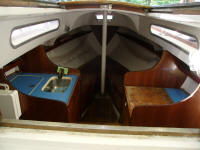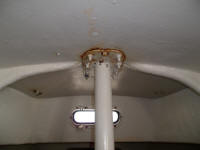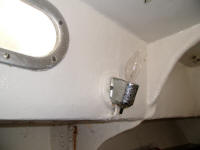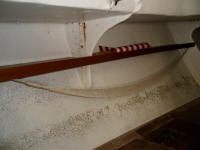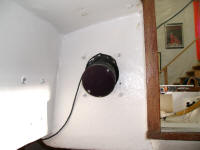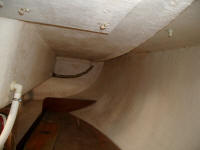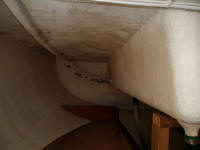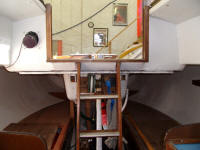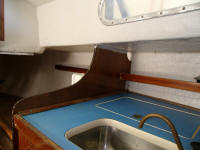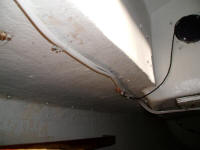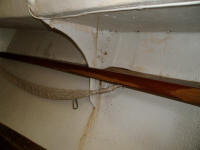
110 Cookson Lane | Whitefield, ME 04353 | 207-232-7600 | tim@lackeysailing.com
Sailmaster 131 | Interior Inspection and Comments
The project began without a specific plan for the interior renovation, so I performed a detailed assessment of the condition in order to determine the potential scope of interior work and, as a corollary, the entire project.
The inside of the cabin trunk, overhead, and inside of the hull (above and below the waterline) featured various layers of paint in assorted condition, with some peeling, flaking, and mildew. Restoration of these areas would require the usual bouts of sanding and other surface preparation, and were in the anticipated condition.
The varnished interior woodwork, at best, required stripping and refinishing, as many areas had suffered from moisture damage, with lifting varnish.
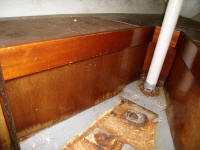
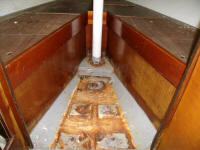
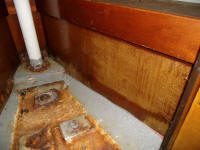
The starboard forward bulkhead was partially delaminated at the edge that contacted the hull, causing damage to the veneer. The four bulkheads defining the galley and forward cabin areas were mechanically secured (bolted) to fiberglass flanges in the hull.
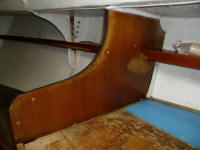
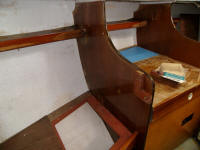

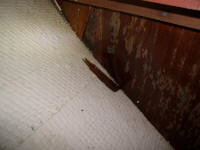
The forward port bulkhead was in better condition.
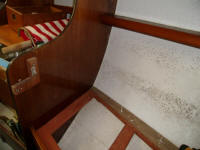
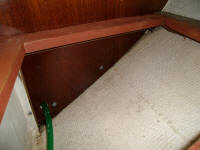
The starboard shelf in the forward cabin was badly delaminated and damaged, along with the section above the "head", or the middle section of the boat between the two bulkheads on that side.
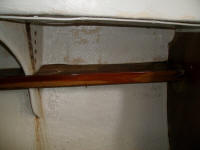

The longitudinal bulkhead of the galley, forming the front of the sink cabinet, was damaged at its lower end, against the hull; other sections of the galley and "head" bulkheads seemed structurally sound if cosmetically deficient.
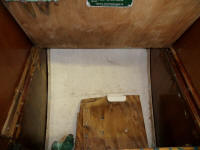

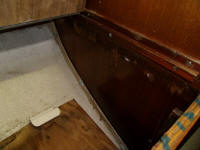
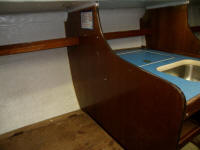
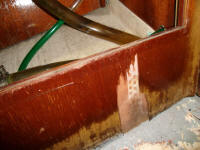
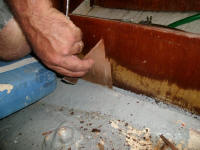
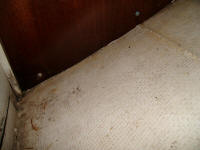
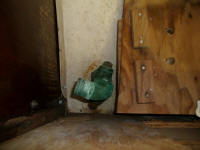
The aft section of the cabin, featuring two quarterberths, featured some rot and deterioration of the starboard longitudinal bulkhead, beneath the berth; its counterpart on the port side was partially damaged from water intrusion, mostly causing damage to the mahogany veneer and finish.
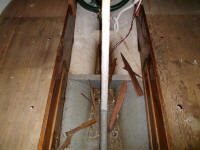
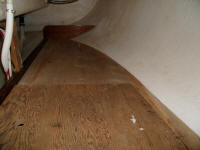
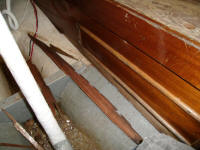
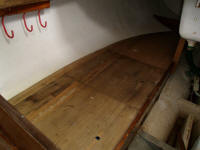
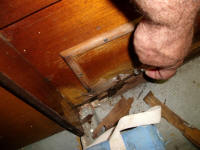
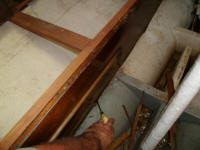
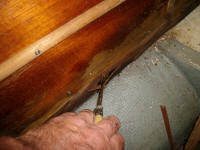
When the boat came to me, some of the fiberglass encapsulating the keel bolts in the bilge had been chipped away, revealing rusted bolts and backing plates in several areas. I chipped away the exposed flaking rust to reveal whatever portions of solid metal remained, as seen below.
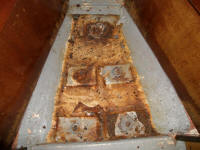
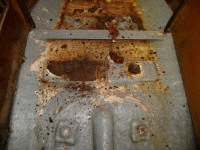
Berth tops, as elsewhere in the cabin, were raw 1/4" plywood over a hardwood frame, except for a 3/4" thick hinged section at the forward end of the port quarterberth. Some of the pieces were partially delaminated. Some of the tabbing securing various pieces to the hull had come loose from the wood over the years.
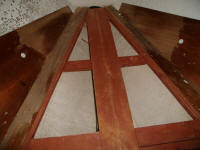
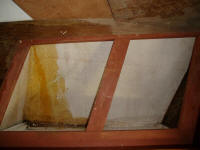
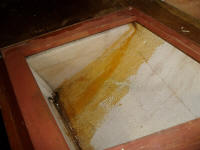

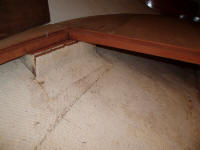
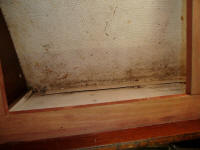
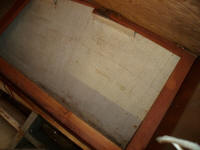

A water tank was located beneath the forward berth; other plumbing, related to the galley sink and various overboard discharges, was in fair condition but needing attention.

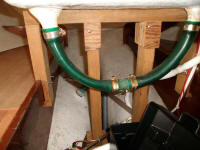
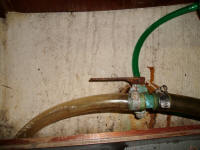
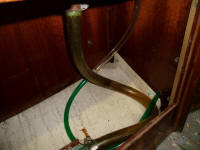
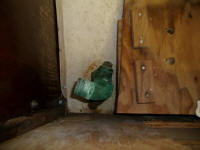
Back to log for August 13, 2013
